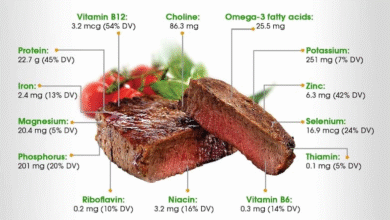Weight-Loss Drugs and Vision Loss: New Research Findings

Recent research has unveiled concerning links between weight-loss drugs and vision loss, particularly amongst users of GLP-1 medications like Ozempic and Wegovy. These popular weight-loss medications, prescribed primarily for type 2 diabetes management, have been scrutinized for their potential side effects beyond weight reduction. Alarmingly, studies indicate a connection between these drugs and the development of serious eye conditions, including non-arteritic anterior ischemic optic neuropathy (NAION) and diabetic retinopathy. As these conditions can significantly impact one’s eyesight, the findings have prompted healthcare professionals to recommend regular vision screenings for individuals undergoing treatment with these medications. With the rising popularity of these weight-loss options, understanding their implications on eye health is more crucial than ever.
The growing trend of using pharmaceuticals for weight management, especially among those with diabetes, has sparked a significant conversation around the health risks associated with these treatments. Medications like semaglutide and tirzepatide, marketed under names such as Ozempic and Wegovy, have shown promises in aiding weight loss, yet new studies caution that they may pose risks to visual health. Patients are now being urged to pay close attention to the effects of these drugs, which may lead to serious conditions affecting the optic nerve and retina, such as diabetic retinopathy. Acknowledging the importance of eye health, healthcare experts stress the necessity for regular screenings to monitor any visual complications that may arise. As the implications of these weight-loss drugs on ocular conditions become clearer, further research is vital to ensure patient safety and wellbeing.
Understanding Weight-Loss Drugs and Their Impact on Eye Health
Weight-loss drugs, particularly those classified as GLP-1 medications, have gained popularity for their effectiveness in managing weight and controlling type 2 diabetes. These include well-known brands like Ozempic and Wegovy. However, emerging research suggests that these drugs could pose risks beyond their weight-loss benefits, notably concerning eye health. Recent studies have highlighted a potential link between the use of semaglutide and tirzepatide and an increased risk of serious eye conditions, particularly non-arteritic anterior ischemic optic neuropathy (NAION), which can lead to sudden vision loss.
It’s crucial to understand the mechanics of how these drugs operate. While they primarily work by enhancing insulin secretion and suppressing appetite, the physiological changes they induce can affect vascular health, potentially exacerbating conditions like diabetic retinopathy. As a result, patients using GLP-1 medications may require careful monitoring and regular eye exams to mitigate risks associated with vision loss.
The Risk of NAION with GLP-1 Medications
Recent investigations into GLP-1 medications have raised concerns about non-arteritic anterior ischemic optic neuropathy (NAION), a condition characterized by sudden vision loss due to insufficient blood flow to the optic nerve. This condition was observed in a small number of participants from studies that analyzed over 159,000 individuals with type 2 diabetes using semaglutide and tirzepatide. While the absolute risk remains low, the increase in NAION cases among users of these drugs warrants attention and further exploration.
It is essential for healthcare providers to consider these findings when prescribing GLP-1 medications. Regular screenings for NAION and other optic nerve disorders should be integrated into routine healthcare for patients on these drugs. Although Novo Nordisk does not officially recognize NAION as an adverse reaction, the potential risk highlights the need for ongoing research and proactive patient management to safeguard against vision loss.
Diabetic Retinopathy and GLP-1 Medications: A Cautious Approach
Diabetic retinopathy is another eye condition that has been linked to the use of GLP-1 medications. Although one study found only a modest increase in the occurrence of diabetic retinopathy among users of semaglutide and tirzepatide, it is essential to approach this finding with caution. Diabetic retinopathy can lead to severe complications, including sight-threatening conditions, making it vital for patients with diabetes to undergo regular eye exams to monitor their ocular health.
Despite the slightly elevated risk of diabetic retinopathy associated with GLP-1 drugs, many researchers and healthcare professionals argue that the overall benefits of these medications in managing blood sugar and weight may outweigh the risks. The key lies in maintaining tight control of diabetes, as improved glycemic control can reduce the severity and incidence of diabetic eye disease. Patients should engage in an informed discussion with their healthcare providers about the risks and benefits of weight-loss medications concerning their personal health.
Best Practices for Monitoring Eye Health on GLP-1 Drugs
For individuals starting on GLP-1 medications such as Ozempic and Wegovy, it is vital to implement a robust eye health monitoring strategy. Medical professionals recommend that patients undergo comprehensive eye examinations prior to beginning treatment and continue with regular follow-ups. This approach is critical for detecting early signs of conditions like NAION and diabetic retinopathy, allowing for timely interventions that can preserve vision.
Incorporating regular ophthalmologist visits into the treatment plan can help address any potential changes in vision and ensure that any ocular complications are managed effectively. Education regarding symptoms that may signal vision changes, such as blurred vision or sudden eye pain, is also essential for patients. By fostering open communication about these risks with healthcare providers, patients can take proactive steps toward protecting their eye health while managing their weight and diabetes.
The Role of Novo Nordisk in Patient Safety
Novo Nordisk, the maker of Ozempic and Wegovy, has acknowledged the concerns around potential eye safety issues related to their GLP-1 medications. The company’s proactive stance includes conducting comprehensive safety monitoring and being responsive to reports of adverse events linked to their drugs. They stress that NAION, while serious, is classified as a rare condition that has not been identified as a common adverse drug reaction within their clinical data.
Patients are encouraged to report their experiences and concerns to their healthcare providers and to Novo Nordisk, ensuring that all adverse events are considered in ongoing research. The company emphasizes a commitment to patient safety, advocating for further investigations to clarify the relationship between weight-loss drugs and eye conditions. This transparency is crucial for maintaining trust and ensuring that patients receive the highest standard of care.
Research Developments on Weight-Loss Drugs and Vision Risks
As research continues to evolve regarding the link between weight-loss drugs and vision risks, new studies are anticipated to shed more light on these associations. The findings from recent investigations underscore the importance of monitoring for eyes and vision complications in patients using GLP-1 medications. These insights are particularly relevant for those with a pre-existing history of eye conditions or significant diabetic complications.
Scientists and healthcare practitioners are calling for more comprehensive studies that not only evaluate the potential risks but also explore the benefits of GLP-1 medications in managing diabetes and reducing the risk of cardiovascular diseases. Understanding the full spectrum of these drugs’ effects will aid in developing safer treatment protocols and personalized care strategies for patients with type 2 diabetes.
Patient Experiences and Concerns Regarding Vision Loss
Many patients embarking on treatment with GLP-1 medications have expressed concerns over potential side effects, particularly relating to vision loss. Personal accounts often highlight the anguish of managing diabetes while feeling uncertain about the long-term implications of their medication. It is critical that healthcare providers engage in thorough discussions with patients, addressing their fears and outlining the findings of recent research to provide clarity and reassurance.
By fostering an environment where patients feel comfortable discussing their experiences, healthcare providers can not only alleviate anxiety but also promote adherence to treatment regimens critical for managing both weight and diabetes. This dialogue is crucial in navigating the multifaceted relationship between weight-loss drugs and eye health.
Long-Term Vision Health Strategies For Diabetics on GLP-1s
For diabetics using GLP-1 medications, implementing long-term strategies for vision health is paramount. This can include dietary modifications that support overall health and specifically eye health, such as including foods rich in lutein and omega-3 fatty acids. Additionally, lifestyle changes like regular exercise can greatly improve cardiovascular health and reduce the risk of complications related to diabetes, further safeguarding the eyes.
Patients should also be educated about the importance of controlling blood sugar levels, which plays a significant role in preventing or delaying the onset of diabetic complications, including diabetic retinopathy. By integrating these strategies into their daily lives, individuals can enhance their well-being and reduce potential risks associated with their diabetes management and weight-loss medications.
Importance of Ongoing Research for Weight-Loss Drugs and Eye Conditions
The conversation surrounding weight-loss drugs and their potential link to eye conditions highlights the critical need for ongoing research. As the prevalence of obesity and type 2 diabetes continues to rise, understanding the implications of medical interventions is more important than ever. Researchers aim to clarify the relationship between GLP-1 medications and conditions like NAION and diabetic retinopathy through robust studies and clinical trials.
Continued investigation is necessary not only to assure patients of the safety and effectiveness of these treatments but also to develop new medications that can optimize outcomes for those at risk. As our understanding of these drugs evolves, it will be crucial to communicate findings to both healthcare providers and patients, ensuring that everyone involved is equipped with the knowledge to make informed decisions about treatment options.
Frequently Asked Questions
What is the relationship between GLP-1 medications and vision loss?
Recent research indicates that GLP-1 medications, such as Ozempic and Wegovy, may be associated with an increased risk of vision loss, particularly in patients with type 2 diabetes. Studies have suggested a modest risk of developing non-arteritic anterior ischemic optic neuropathy (NAION), a rare condition that can result in sudden vision loss, among users of these weight-loss drugs.
Can weight-loss drugs like Wegovy increase the risk of diabetic retinopathy?
Yes, weight-loss drugs like Wegovy, which are GLP-1 medications, have been linked to a small increase in the incidence of diabetic retinopathy. While the increase was modest, it highlights the importance of regular eye screenings for patients with type 2 diabetes who are being treated with these medications.
What should patients using Ozempic be aware of regarding vision risks?
Patients using Ozempic should be aware of a potential link between this GLP-1 medication and vision risks, including NAION and diabetic retinopathy. It is recommended that individuals monitor their eye health closely, especially if they have preexisting conditions related to diabetes.
Are the side effects of Ozempic related to vision loss?
While Ozempic has not been definitively linked to vision loss as a common side effect, studies have indicated a potential risk for conditions like NAION. Patients using Ozempic should discuss any vision changes with their healthcare provider.
What is NAION and how is it connected to weight-loss drugs?
NAION, or non-arteritic anterior ischemic optic neuropathy, is a rare eye condition that can lead to sudden vision loss. Recent studies have found a modest risk of NAION associated with the use of weight-loss drugs like semaglutide, which includes Ozempic and Wegovy, particularly in individuals with type 2 diabetes.
How frequently should diabetes patients using GLP-1 medications be screened for vision issues?
Patients with type 2 diabetes who are treated with GLP-1 medications, such as Ozempic or Wegovy, should be regularly screened for vision issues. Healthcare providers recommend comprehensive eye exams upon starting treatment and during follow-up visits to monitor for potential complications.
Why is it important for patients on GLP-1 medications to monitor eye health?
Monitoring eye health is crucial for patients on GLP-1 medications due to the potential risks of developing eye conditions such as NAION and diabetic retinopathy. Regular examinations can help detect any changes early, allowing for timely management of vision-related issues.
Are weight-loss drugs like Mounjaro safe in terms of eye health?
While weight-loss drugs like Mounjaro have benefits, recent studies suggest they may carry some risks for eye health, particularly concerning conditions like NAION and diabetic retinopathy. Ongoing research is necessary to fully understand these risks, and patients should maintain regular eye health check-ups.
What should I do if I’m concerned about vision loss while taking Wegovy?
If you have concerns about vision loss while taking Wegovy or any GLP-1 medication, it’s essential to consult with your healthcare provider. They can evaluate your risk factors, recommend eye health screenings, and discuss the potential benefits and risks associated with your treatment.
Does Novo Nordisk acknowledge vision risks associated with GLP-1 drugs?
Novo Nordisk, the manufacturer of Ozempic and Wegovy, acknowledges reports of vision-related side effects but emphasizes that NAION is a rare condition. They encourage further research to clarify potential links between their medications and vision risks, prioritizing patient safety.
| Key Point | Details |
|---|---|
| Research Findings | Studies link weight-loss drugs semaglutide and tirzepatide with vision loss. |
| NAION Risk | Modest risk of developing non-arteritic anterior ischemic optic neuropathy (NAION) reported in users. |
| Patient Data | Out of over 159,000 participants, 35 developed NAION compared to 19 in the control group. |
| Other Eye Conditions | 93 patients exhibited other optic nerve disorders due to the drugs. |
| Diabetic Retinopathy | A small increase in diabetic retinopathy was observed in diabetic patients taking GLP-1 drugs. |
| Screening Recommendations | Patients with type 2 diabetes on GLP-1s should be regularly monitored for eye complications. |
| Doctor Insights | Dr. Sue Decotiis recommends further studies to confirm associations and stresses monitoring. |
| Manufacturer Response | Novo Nordisk emphasizes safety and the rarity of NAION, urging more research. |
Summary
Weight-loss drugs and vision loss have been a growing concern, as recent studies show connections between certain weight-loss medications and serious eye conditions. While the risk of developing conditions like non-arteritic anterior ischemic optic neuropathy (NAION) is modest, the implications for those managing type 2 diabetes are significant. Ongoing monitoring and further research are essential to assess the full impact of these medications on eye health.




